Lead Generation
Key benefits of using your CRM to power your marketing

Haydeé Ferrufino
Haydeé Ferrufino | Dec 04, 2022 | 10 MIN READ
Dec 04, 2022 10 MIN READ

This guide explores and explains how to harness the power of your data and turn your CRM into a revenue-generating growth machine!
A CRM is the cost of entry into a modern market:
Try running a business without one 😜. But a CRM is more than just a digital filing cabinet. It’s a way for you to access, understand, and monetize a goldmine already at your fingertips: customer data.

<<Take a first look at the 15 Key Benefits CRM Systems Can Provide to Your Business >>
The Data Gold Rush
Data on its own is useless. For data to be effective, it needs to be collected, stored, and harnessed in such a way it becomes valuable with minimal maintenance, as you can see in the below image, spread data by itself tells you nothing, but finding the correlation between the data (trends) is the key to get ahead of the game.
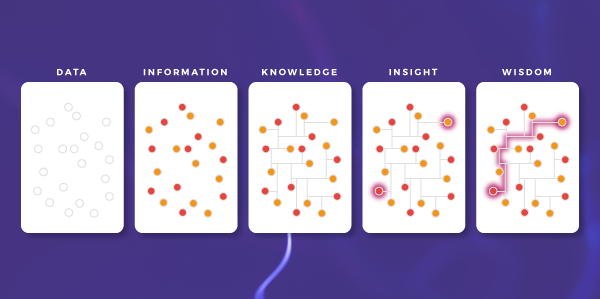
For example, having all the names of anybody showing interest in your business over the last 18 months can be helpful. But how about knowing who is ready to buy, or even who is ready to buy, AND checking two or three other boxes critical for making a sale? who was just browsing a few minutes ago and has shown interest (quoted with a current open deal) before,
By better understanding your data and working smart, you can ensure the right messaging gets to the right people at the right time without labor-intensive or prospect-annoying processes. Targeting has also become more sophisticated, meaning that ads are now less interruptive and more informative — so sophisticated, in fact, that we now take for granted the quality of the ads we get served in our Instagram feeds and YouTube videos.
The old ways don’t work anymore
Contemporary digital marketing has changed from its first inception 20 years ago. GDPR, privacy, savvy prospects, and even huge corporations like Apple redefining data mining have all had a profound impact. Sound familiar?
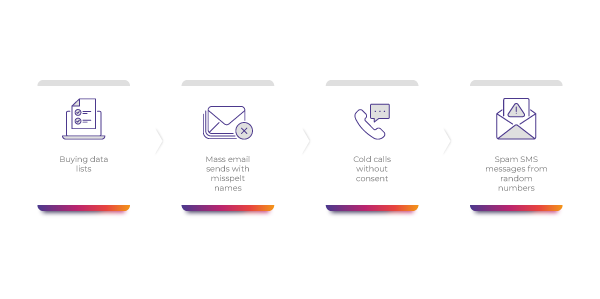
<<Want to know how the GDPR process works? Learn here >>
You probably even still see some of them. And we’re not talking about the occasional ‘Hi {first name}’ greeting mistake every marketer dreads sending. We’re talking about the data-scraping, privacy-invading, industry-shaming practices that gave us all a bad name.
Any company relying on these practices today would seem ancient by comparison. But the uncomfortable truth is many businesses STILL market like this. We bet you’ve even had one this week.
But why?
Malicious intent? Avarice? Lack of caring?
In most cases, it’s none of the above. It’s the opposite. Many companies are so excited to get their message out there, that they forget the blend of science and craft that comes together to create great marketing. They forget they sit on a goldmine of prospect data offering powerful insights into behavior, predilections, and desire.
Say hello to the Customer Relationship Management (CRM) system
A CRM is a system that holds the data of your customers. It can be as simple as a spreadsheet or as powerful as a constantly evolving AI single source of truth. And when used correctly, a CRM has the power to drive more revenue and delight prospects at every stage of the buying journey.
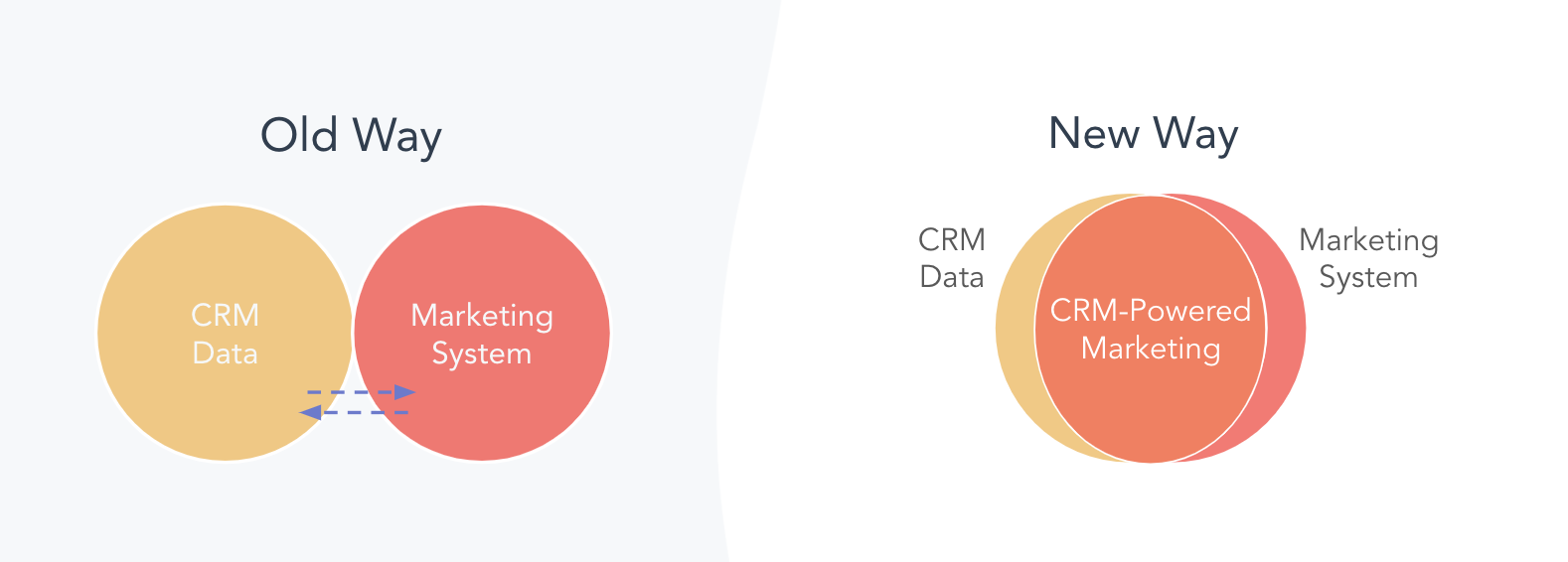
Why You Need to Leverage Your CRM for Experience-Driven Marketing
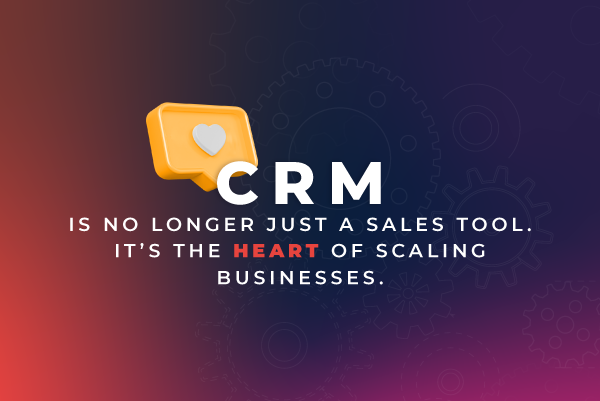
The marketers who get ahead today are hyper-focused on the customer experience. Experience-driven marketing puts your customers at the center of everything you do as a marketer.
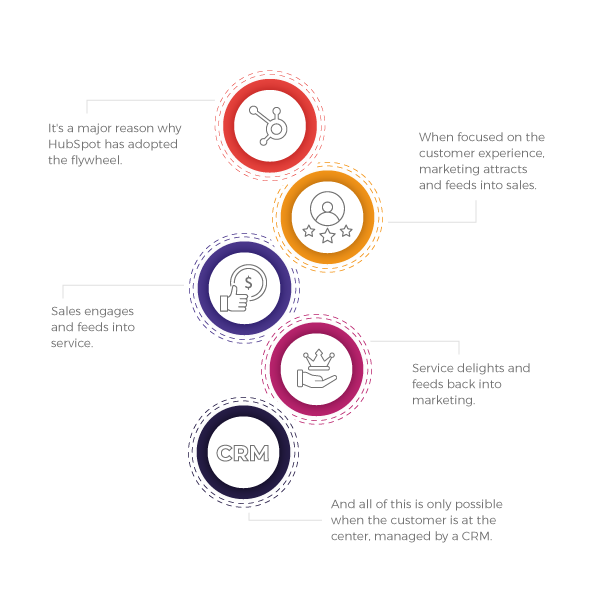
Leveraging your CRM is the secret to experience-driven marketing. Experience-driven marketing isn't just a buzzword -- it's your secret to growth. Forrester's research found that companies who said they were focused on experience grew 40% faster and increased customer lifetime value by more than 60% versus those who weren't.
Very few marketers have all of their tools and tactics tightly integrated into a CRM -- which often leads to disjointed customer experiences, siloed data, and an inability to know what's working.
This is why we're investing so much effort in tightly integrating HubSpot's Marketing Hub with the CRM -- to give your team a unified view of the customer experience, which allows you to create truly personalized experiences across all channels, and to help you properly measure your success as a marketer.
☝We can help you to grow! Click here to schedule a FREE CONSULTATION
A CRM Helps You Personalize Your Marketing Offers
Rooting your marketing in a CRM also lets you create personalized experiences across every channel. Personalization continues to be the holy grail for delivering a great experience. In this hyper-competitive environment, it's harder than ever to win attention -- and we all know that the more you personalize, the greater your chances are of being noticed.
All of this is possible through CRM-driven marketing:
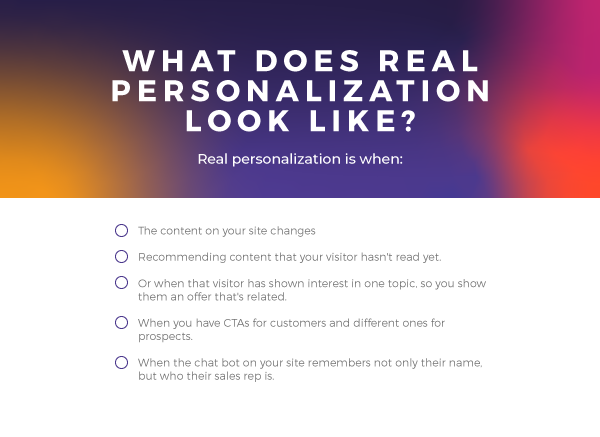
The three paths to CRM success:
- Segment - ensure prospects hear a message suited to their needs
- Contextualize - explain in clear terms why it's useful
- Personalize - make them feel valued and loved
Segment
The average consumer is bombarded by promotional messaging and sees anywhere between 5000-1000 advertisements per day.
Think about the last time you were relaxing and browsing on your phone, maybe doing a bit of online shopping, checking in on social media, or reading the news. How many irrelevant adverts did you see?
We bet this week alone you’ve closed down at least one web page because the advertising ruined the online experience for you. But there’s a bigger danger for marketers lurking in the internet shadows than angry prospects. Something much scarier… Apathy!
When your consumer doesn’t feel like your messaging has direct relevance to their life at that moment, they’ll tune out. This is why a CRM is vital to modern marketing. If you don’t understand your customers, you can’t give them the content they need when they need it in a way that works for them.

Use HubSpot lists to segment your database
Lists are a great way to isolate segments of your database by any data point you hold. It can be contacted by (who they are) company (where they work) or activity (what they’re doing) focussed and they can even constantly update to suit changing data fields in real-time.
In minutes, you can build a list of all contacts in the third month of their current contract - would they benefit from a useful upsell to complement their existing package?
How about targeting every prospect that’s visited your pricing web page more than once in the last 30 days by sending them a discount code?
Obviously, the same messaging isn't going to work on both of those two groups. But with a small amount of thought, each will get messaging they’re likely to welcome because it solves a specific problem they have.
<<Discover more in this article: How to make a segmentation through HubSpot Lists >>
Create manually tracked custom behavioral events
Manually tracked custom behavioral events enable you to define and track events that are unique to your business. Custom behavioral events can be tied to contact properties, which you can then use across HubSpot's tools. Manually tracked events use the analytics API and require a developer to set up.
This tool in HubSpot Marketing Hub Enterprise allows you to track more advanced analytics on your website or from external third-party apps to gain richer context about the full customer journey.
<<Learn how HubSpot Marketing Hub works in this article>>
Contextualize
Every buyer for every product must pass through the three key buying stages of Awareness, Consideration, and Decision.
But depending on your product or service, those stages often vary. A thirsty person on a hot day will travel from Awareness to Decision about buying a cold drink faster than a Project Manager looking at new forecasting software for a global Saas business. One is made in minutes, the other could be months.
Although the journey may change, one fundamental remains consistent throughout: consumers need specific buying stage-specific content before they can make a decision.
🚩Don’t miss the video: How To Make An Effective Customer Journey Map In Under An Hour (FREE Templates)
Build Campaign triggers that are linked to the Buyer's Journey using HubSpot
Consider the below content that was created for buyers at each stage of the journey, triggering emails and messages for the prospect that are linked to where they find themselves in the buyer’s journey will ensure that content is relevant to their needs. Put yourself in the buyer’s shoes and ask yourself what they need at each stage of their journey to purchase.
Awareness: Blog: Why Project Managers never have enough hours in the day
Consideration: Guide: 10 ways to become a more effective Project Manager.
Decision: Case study - why company X chose our technology to solve their forecasting problem
By labeling prospects in your CRM depending on their customer journey, you can ensure they see suitable messaging for their journey.
By segmenting your audience, you can ensure they receive relevant, contextually relevant sales messaging to nurture prospects and improve convention rates
Use HubSpot Smart Content to Contextualise your messaging at scale
HubSpot Smart content allows you to create different content based on a set of rules. Your emails, landing pages, and CTAs can display differently depending on what is known about a prospect or contact.
For example, rather than taking time to manually send context-specific content to prospects, you can adapt your HubSpot pages to react to their needs instead. You can use the data in your CRM to show Awareness, Consideration, or Decision-related content depending on their needs. Allowing you to tailor content to the stage of the buyers’ journey.
By understanding which prospects need to see your messaging, you reduce admin, boost conversion rates, and drive more revenue with less effort.
Personalize
Yes, you can use HubSpot to personalize sales messaging on any standard or custom properties (the various data points you collect on contacts).
But effective personalization doesn’t just mean greeting somebody through email by name.
Modern personalization means sending relevant messaging in a timely fashion using the right language, tone, and subject matter.
You want your prospects to feel a sense of serendipity. Ultimately we know it was effective CRM management because you created a HubSpot workflow to message either HR managers one month before their next renewal date or small business owners who’ve set up shop in the last year. However, prospects will feel a connection with your brand because the message is aimed at their needs at the right time.
Where contextualizing ends and personalization starts can be a grey area, so it’s probably easier to think of it like this:
Segmentation - to whom do we want to speak?
Contextualization - what are we going to say?
Personalization - how are we going to say it?
Contextualization ensures you don’t torpedo a conversion by going too hard too soon, but personalization ensures the prospect feels you’re speaking directly to them at the time they’re most likely to want to hear your message.
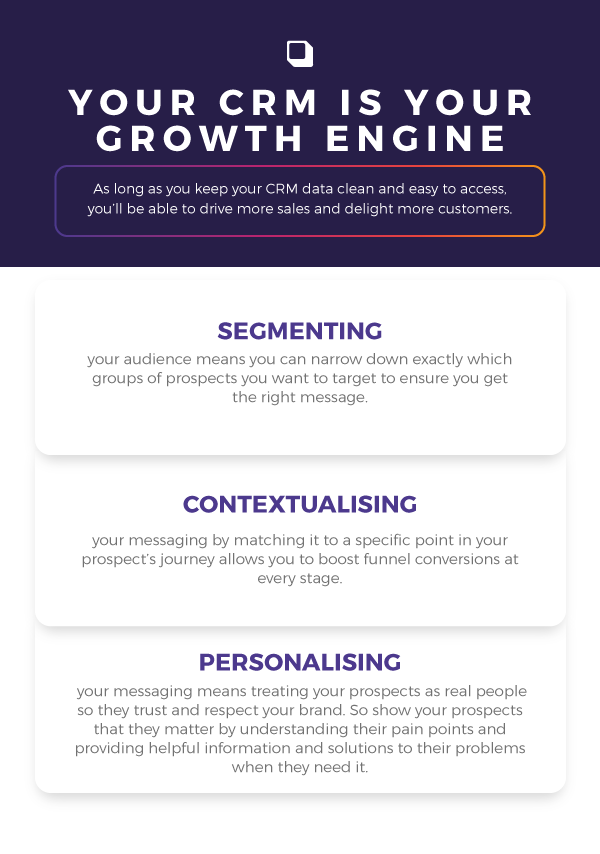 Applying any or all of these ideas will undoubtedly drive more revenue through your business in a sustainable, cost-effective way. By using the simple but powerful and effective toolset from HubSpot you can build deeply personal and contextual campaigns at scale.
Applying any or all of these ideas will undoubtedly drive more revenue through your business in a sustainable, cost-effective way. By using the simple but powerful and effective toolset from HubSpot you can build deeply personal and contextual campaigns at scale.
You can empower your CRM in a growthly way with us! Are you ready to scale?
TABLE OF CONTENTS
Stay Updated with Our
Latest Posts
Subscribe now to receive the freshest content, insights, and updates directly in your inbox.

Recent Articles


2024 © The Orange Box Agency – All rights reserved




.png?width=90&height=90&name=facebook%20(1).png)
.png?width=94&height=96&name=Vector%20(1).png)